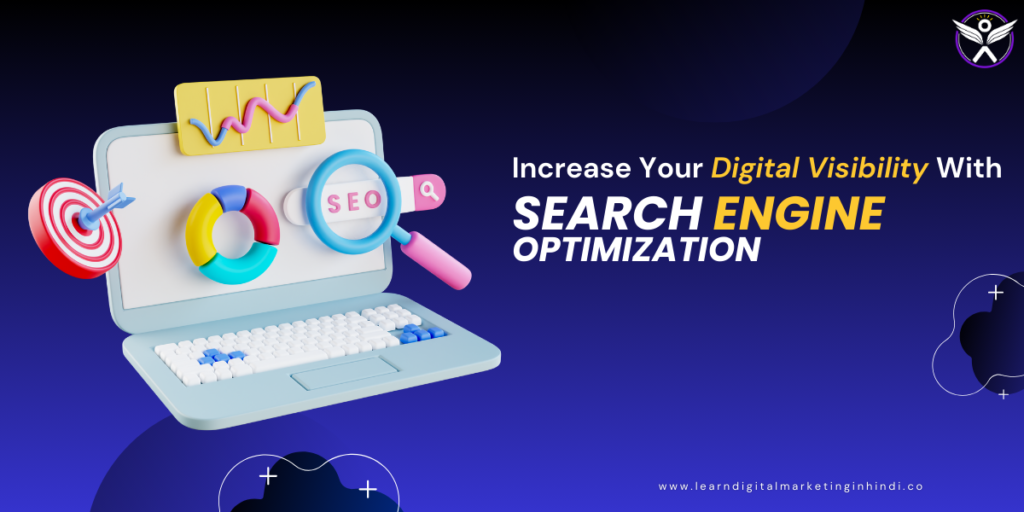Search Engine Optimisation

Search Engine Optimization (SEO) is the process of optimizing your website to improve its visibility in search engine results pages (SERPs). The goal of SEO is to increase organic (non-paid) traffic by ranking higher for relevant keywords.
Why is SEO Important?
- Increased Visibility: Higher rankings lead to more website visitors.
- Credibility and Trust: Appearing on the first page of search results builds trust.
- Cost-Effective: Drives free, targeted traffic compared to paid advertising.
- Improved User Experience: SEO optimizations often enhance website usability.
- Long-Term Benefits: Sustainable traffic growth over time.
Key Components of SEO
1. On-Page SEO
On-page SEO focuses on optimizing individual pages to rank higher:
- Keyword Research:
- Use tools like Google Keyword Planner, Ahrefs, or SEMrush.
- Find high-traffic, low-competition keywords relevant to your niche.
- Meta Tags:
- Title Tag: Include primary keywords and keep it under 60 characters.
- Meta Description: A concise summary (120–160 characters) with keywords to attract clicks.
- Content Optimization:
- Use primary and related keywords naturally.
- Write in-depth, engaging, and valuable content.
- Use headings (H1, H2, H3) to structure the content.
- URL Structure:
- Keep URLs short and descriptive (e.g.,
example.com/best-digital-marketing-tips).
- Keep URLs short and descriptive (e.g.,
- Internal Linking:
- Link to other relevant pages within your site.
- Image Optimization:
- Use descriptive file names and alt text for images.
- Compress images for faster loading.
2. Off-Page SEO
Off-page SEO builds authority and credibility through external efforts:
- Backlinks:
- Get links from high-authority, relevant websites.
- Use guest blogging and partnerships to earn backlinks.
- Social Signals:
- Increased engagement on social media can boost your content’s visibility.
- Brand Mentions:
- Monitor and encourage online mentions of your brand or website.
3. Technical SEO
Technical SEO focuses on optimizing your website’s backend to improve crawling and indexing:
- Site Speed:
- Optimize loading times using tools like Google PageSpeed Insights.
- Mobile-Friendliness:
- Ensure your site is responsive and works well on mobile devices.
- Secure Website:
- Use HTTPS for a secure connection.
- XML Sitemap:
- Create and submit an XML sitemap to search engines.
- Robots.txt:
- Guide search engines on which pages to crawl.
- Structured Data:
- Use schema markup to help search engines understand your content.
4. Local SEO
For businesses targeting local customers:
- Google Business Profile:
- Optimize your profile with accurate contact details, services, and reviews.
- Local Keywords:
- Use location-specific keywords (e.g., “Digital Marketing in Ghaziabad”).
- NAP Consistency:
- Ensure Name, Address, and Phone number are consistent across platforms.
5. Content SEO
Creating and optimizing content to target relevant keywords and user intent:
- Blogging:
- Write regular blog posts targeting specific keywords.
- Evergreen Content:
- Create timeless, valuable content that stays relevant.
- Answer User Questions:
- Use tools like AnswerThePublic to address common queries.
SEO Tools
- Google Tools: Google Analytics, Search Console, Keyword Planner.
- SEO Platforms: Ahrefs, SEMrush, Moz.
- Technical Tools: Screaming Frog, GTmetrix.
SEO Best Practices
- Focus on user experience (UX) and site speed.
- Avoid keyword stuffing; prioritize quality content.
- Optimize for mobile devices.
- Regularly update old content.
- Keep track of algorithm updates from search engines.
If you’d like to learn more about implementing an effective SEO strategy for your business or website, let me know!